WWII hero's sisters finally learn truth about his fate after Lancaster bomber is found in remote German forest 70 years after it vanished
-
•Sgt John Currey was a gunner on a fateful bombing raid over Berlin in 1943
-
•Until now, his sisters, Norma and Molly Williams, never knew where and how he and his six fellow airmen died
-
•Historians found crash site near village of Lanke, 25 miles north of Berlin
-
•Plane was shot down by air ace Major Werner Husemann, who is still alive
PUBLISHED: 18:52, 29 November 2013 | UPDATED: 22:57, 29 November 2013
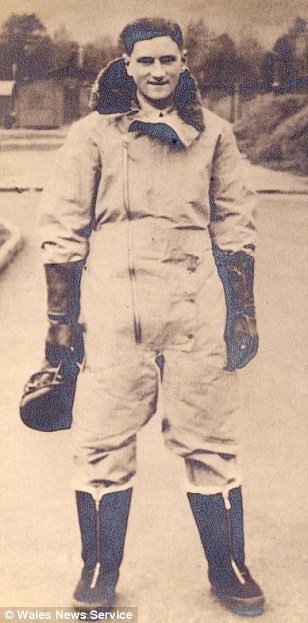
Until now, the whereabouts of a Lancaster bomber shot down in 1943 remained a mystery. Gunner John Currey (pictured) was one of seven crewmen who died after the Berlin raid
As the Lancaster raced across the night sky in 1943 after completing its 19th bombing raid, the crew's luck finally ran out.
It was shot down by a Luftwaffe air ace as it returned from Berlin - and for 70 years, the whereabouts of the plane and its brave airmen, including Sgt John Currey, remained a mystery.
But now, John's two sisters have finally learned the truth about the World War Two hero after his bomber was discovered in a remote German forest.
Nora Williams, 89, and her sister Molly, 87, were teenagers when their brother failed to come home.
The 21-year-old air gunner, of Scarborough, North Yorkshire, was part of a seven-man crew who flew in the Lancaster ED328.
None of the crew survived the fateful flight and their families never knew where and how they died.
But aviation historians have now discovered the wreckage of the downed Lancaster bomber 70 years after the tragedy - in dense woodland 25 miles north of Berlin.
And Nora, who still lives in Scarborough, told of her relief yesterday after finally discovering what happened to her lost brother.
She said: 'I have always wanted to know what really happened to my brother and now I have got that.
'I was surprised to get this information - it came completely out of the blue - but it has been quite satisfying.
'There is only myself and Molly left from the family and we are still coming to terms with it. It’s difficult to talk about.'
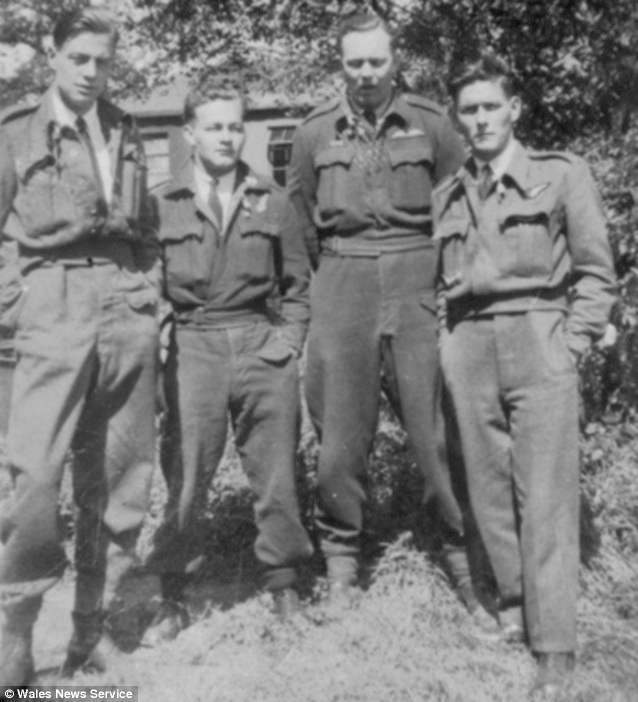
Pictured are four of the other Bomber Command crew (l to r) who took part in the bombing raid of Berlin that night: Sgt John Phillips, Flight Sgt Douglas Tresidder, Flight Sgt Robert Naffin and Sgt David Morgan Ellis
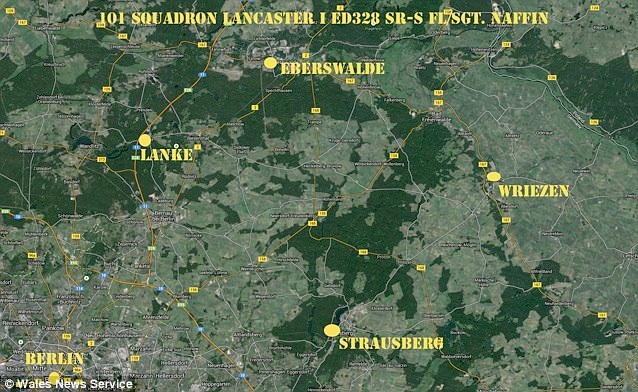
John Currey's two sisters - Nora and Molly Williams - have finally learned the truth about their war hero brother after his plane was discovered in a remote German forest. Aviation historians have established it came down in woodland in the village of Lanke, 25 miles north of Berlin
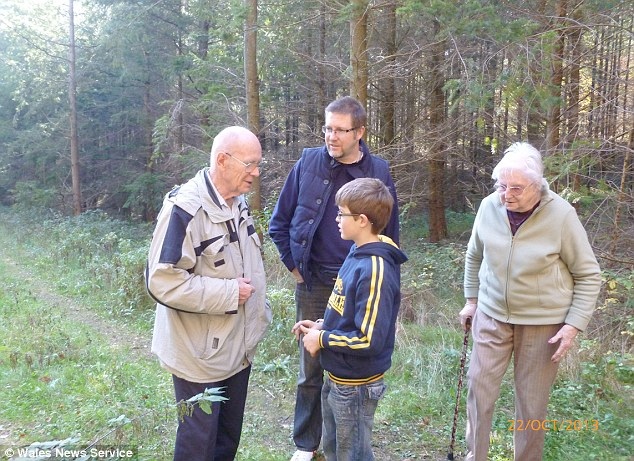
The discovery of the crash site was made by aircrew family member Ian Hill - the nephew of Sgt John Phillips, who was the 19-year-old mid-upper gunner. His family is pictured with Dr Hans Richter, who witnessed the crash when he was 14
The discovery of the crash site was made by aircrew family member Ian Hill - the nephew of Sgt John Phillips, who was the 19-year-old mid-upper gunner.
Mr Hill said his 81-year-old mother Alwyn had finally been given 'closure' after learning what happened to her brother.
He said: 'We managed to track down an eyewitness who saw the whole night battle above his head and then the crash.
'The Lancaster was attacked from underneath and its fuel tanks were hit - causing it to explode in mid-air.
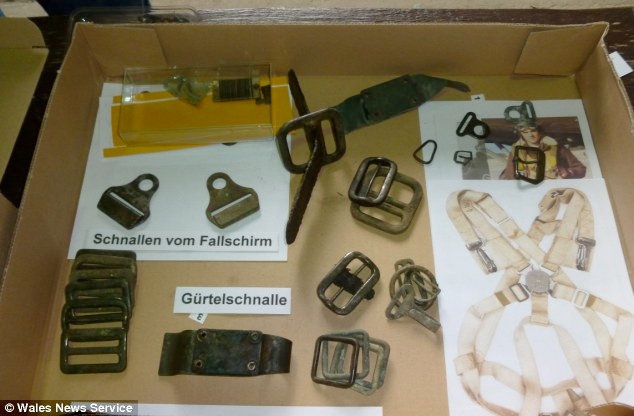
Pictured are the remains from the Lancaster crash site, now in an aviation museum in Berlin
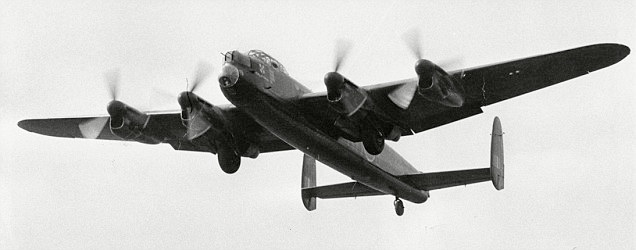
Above, a Lancaster bomber similar to the one which came down outside Berlin. Nora, who lives in Scarborough, told of her relief yesterday after finally discovering what happened to her lost brother
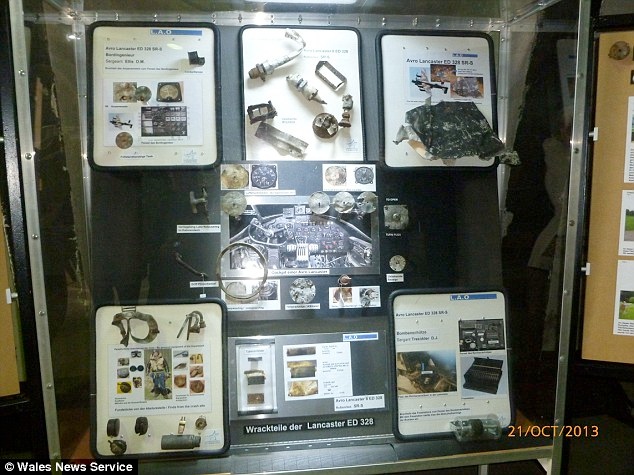
The Lancaster got lost as it tried to return to the 101 Squadron base in Ludford Magna, Lincolnshire, after the raid. The RAF crash report during the war couldn't pinpoint where the plane came down
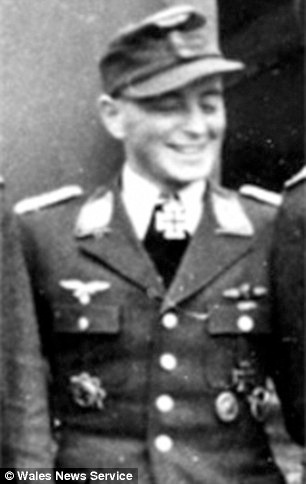
The young crew were intercepted and shot down by the Messerschmitt of Major Werner Husemann (above), who is still alive aged 94
'We now know that the bodies of the crew were treated with the utmost respect by the Luftwaffe and buried with full military honours in a local cemetery.'
The seven-man crew was made up of three British airmen of the RAFVR and four Australian members of the RAAF.
Their plane was lost trying to return to the 101 Squadron base in Ludford Magna, Lincolnshire, after the raid over Berlin.
The RAF crash report during the war couldn’t pinpoint where the Lancaster came down.
But after months of poring over incorrect crash reports, Mr Hill and a team of German aviation archaeologists finally discovered they came down in woodland near the village of Lanke.
They were flying their 19th Bomber Command mission when their luck ran out.
By 1943, Bomber Command aircrews had just a one in four chance of surviving their first 30 missions.
The young crew were returning from the raid when they were intercepted by the Messerschmitt of Major Werner Husemann - who is still alive aged 94.
He was a highly decorated air ace who received The Iron Cross from Adolf Hitler.
Sales manager Mr Hill, from Crewe, Cheshire, said the schoolboy who witnessed the final moments of the crew gave him an emotional tour around the forest crash site.
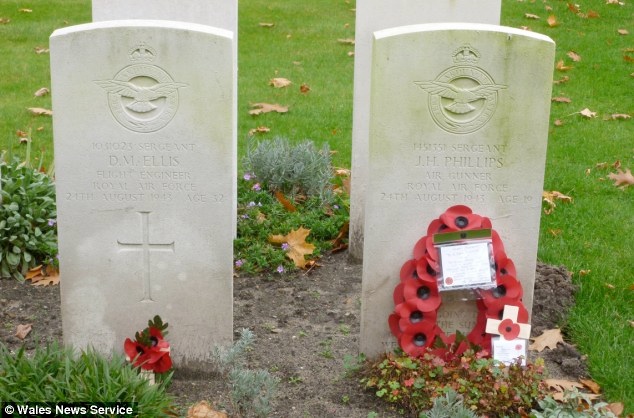
The bodies of the crew were treated with the utmost respect by the Luftwaffe and buried with full military honours in a local cemetery
Mr Hill said: 'Dr Hans Richter was only 14 at the time but his memory is so vivid. It was an extremely traumatic experience as it took place over his head.
'He said he saw a chain of light going from the German night fighter to a large black four-engined plane.
'Next there were sparks and a huge red fireball and then the plane came down in parts after exploding.
'His father was the head of the local fire brigade which had to tend to the crash site and exhumed the bodies.
'It was wonderful to learn they were laid out in the village hall and buried in the local cemetery with full military honours by the Luftwaffe and treated with respect.'
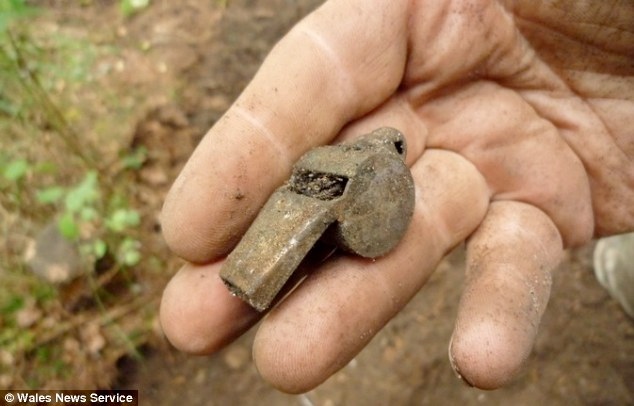
The search is still underway to trace the remaining families of the tragic crew who have never known where and how their loved ones died. Above, a whistle recovered from the crash site
In 1946, the bodies of the crew were moved and interred at the Berlin 1939-45 war cemetery.
Now parts of the crashed plane have gone on display at Finowfurt Aviation Museum in Berlin.
The search is still underway to trace the remaining families of the tragic crew who have never known where and how their loved ones died.
They include the family of married 32-year-old flight engineer Flt Sgt David Morgan Ellis, of Pontypridd, South Wales.
The two remaining Australian crew to have families traced are 23-year-old air gunner Flt Sgt Everard John Phillips, of Wembley, Western Australia, and 25-year-old navigator Flt Sgt Noel Joseph Bullen, of Thornbury, Victoria.
Mr Hill said: 'Before this discovery, all the families knew was they had crashed somewhere around Berlin and were buried in the Berlin war cemetery in 1946.
'It would be really nice to try and share the whole experience with the other families and give them what we have had - the chance to go and see the plane and crash site.
'At the end of the day, these guys gave their lives for the freedoms we have today.
'It’s nice to be able to pay some respects and keep their memory alive.'
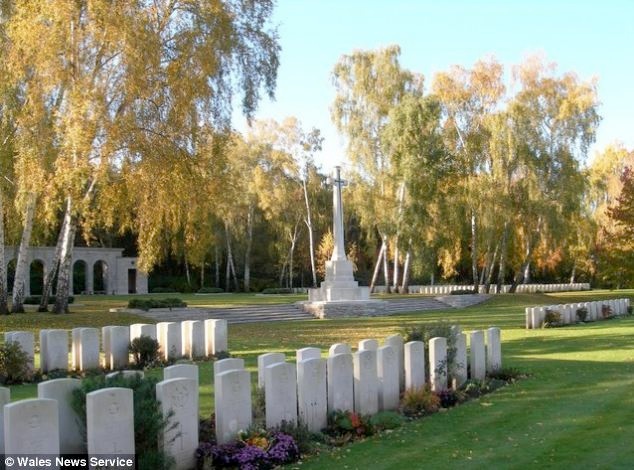
In 1946, the bodies of the crew were moved and interred at the Berlin 1939-45 war cemetery. Now parts of the crashed plane have gone on display at Finowfurt Aviation Museum in Berlin